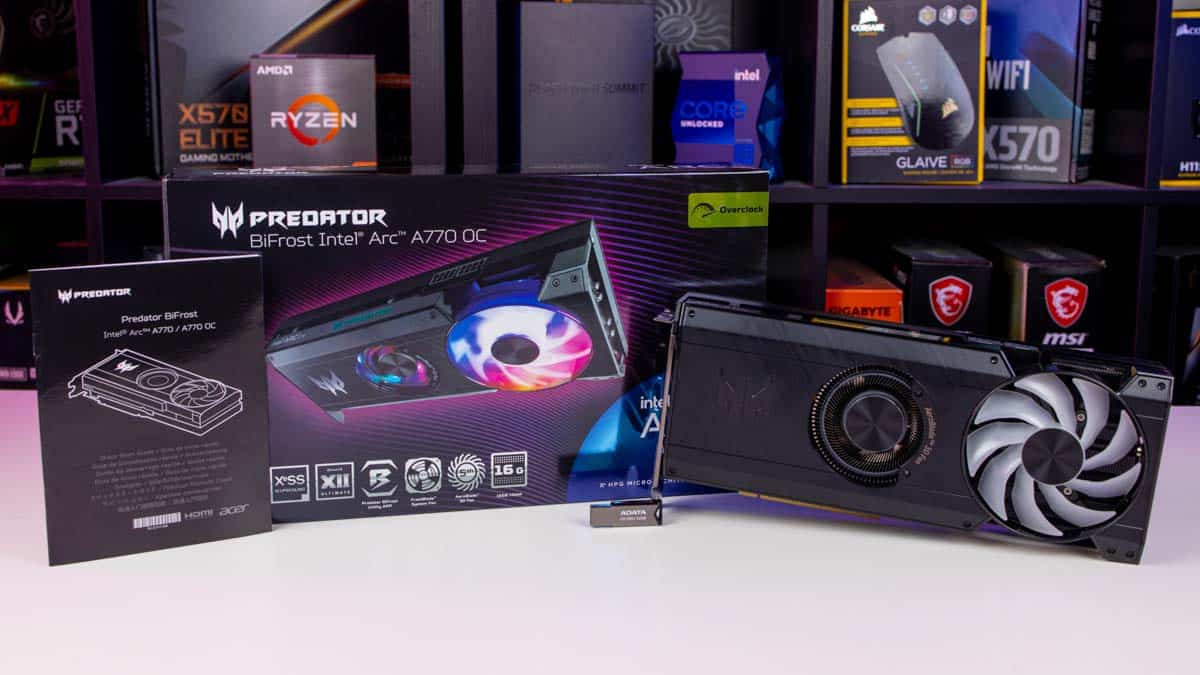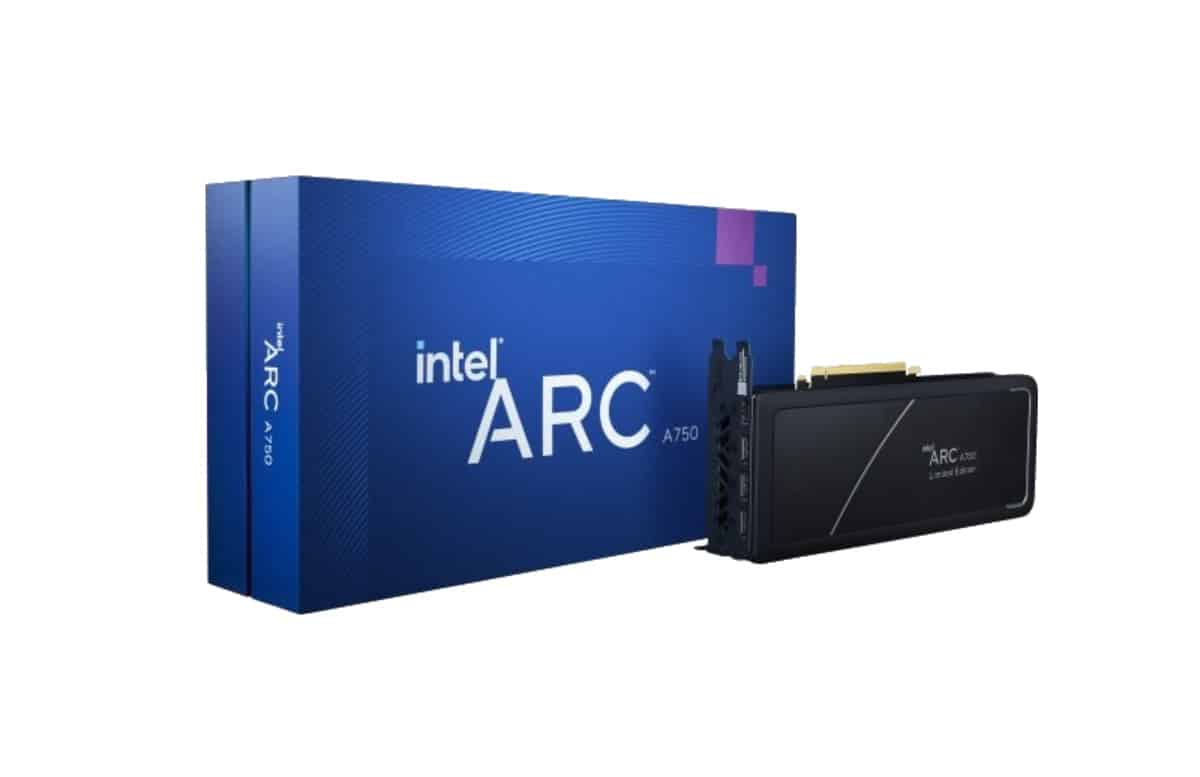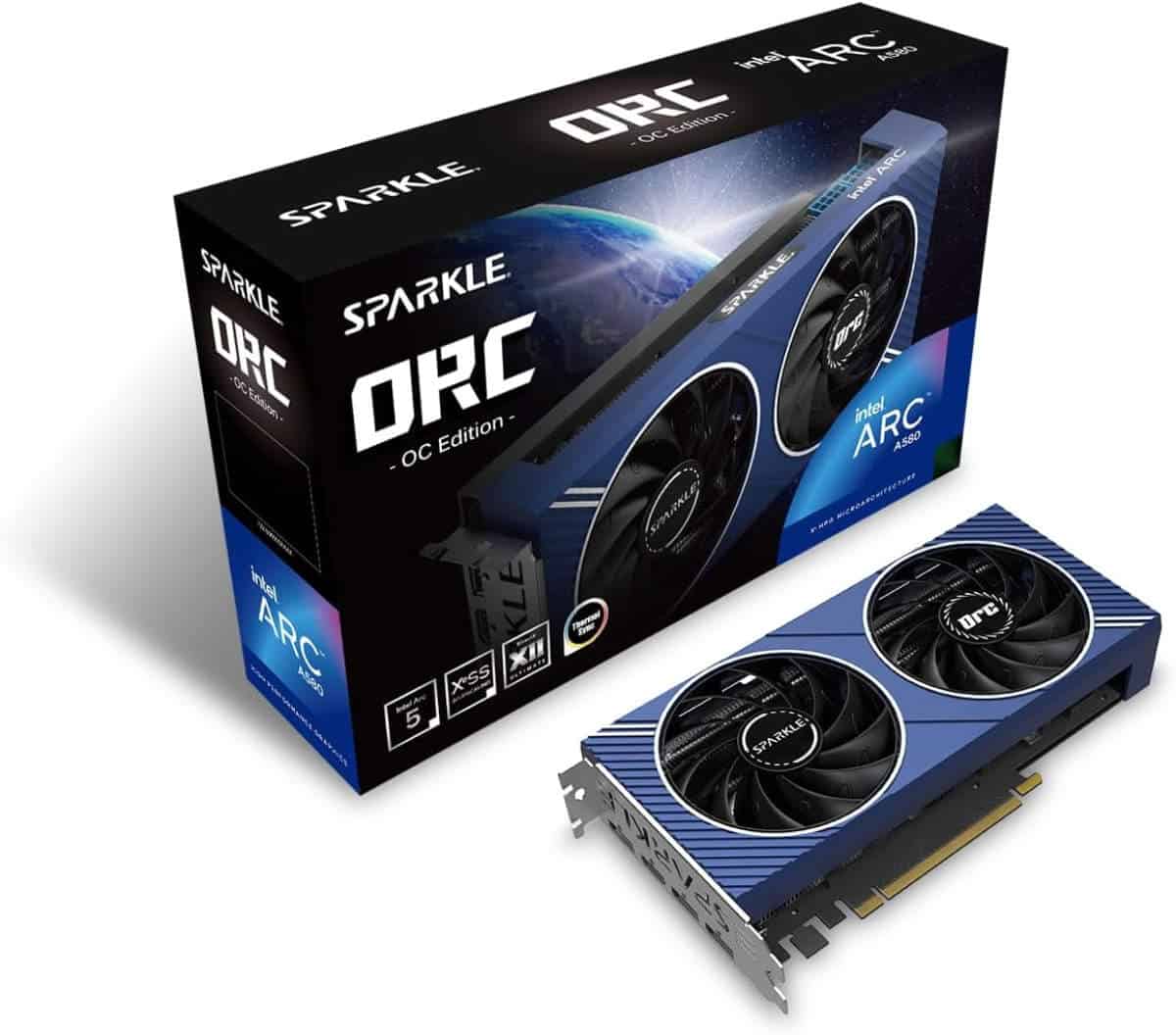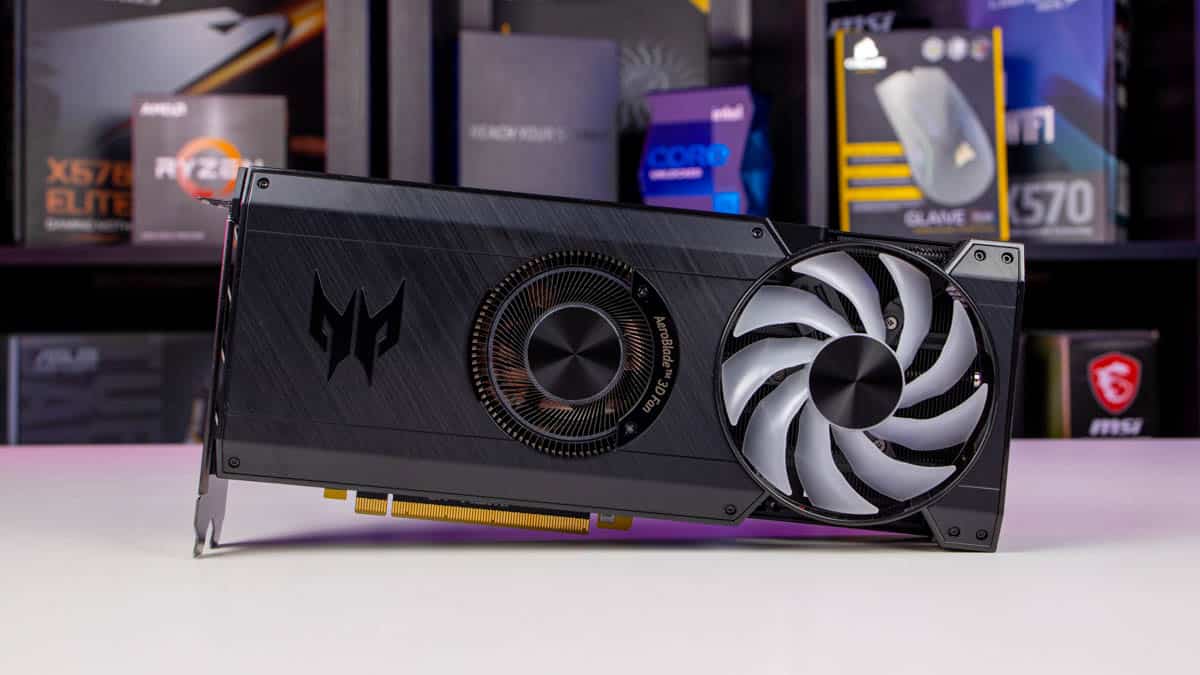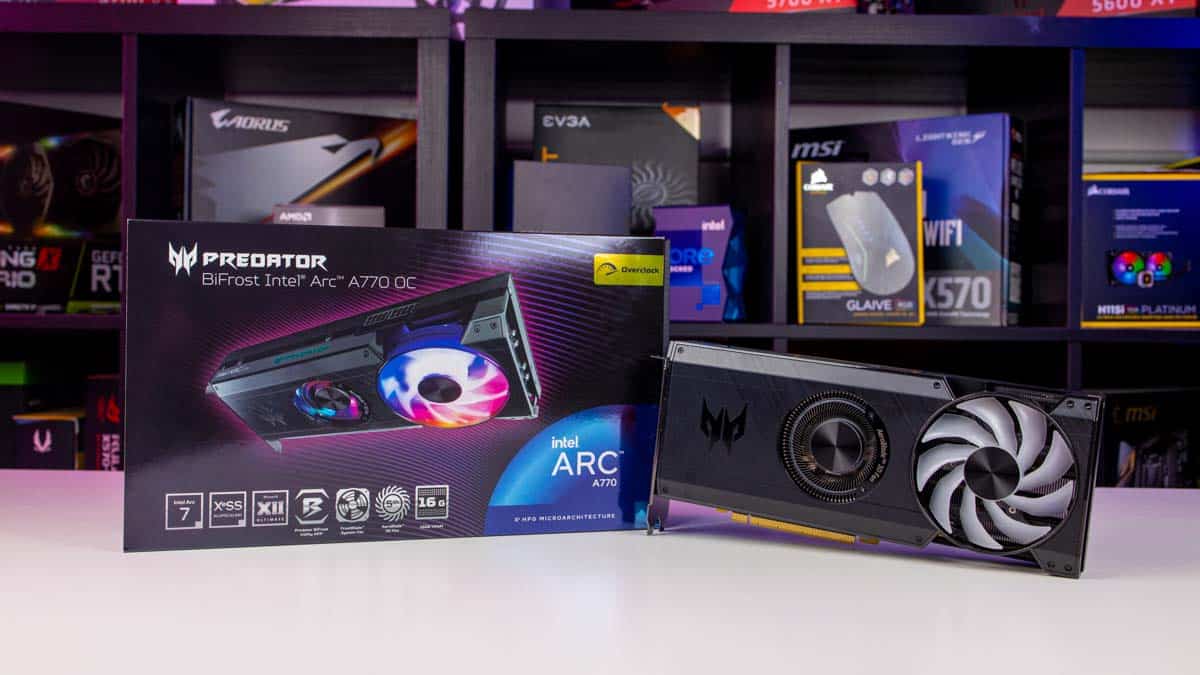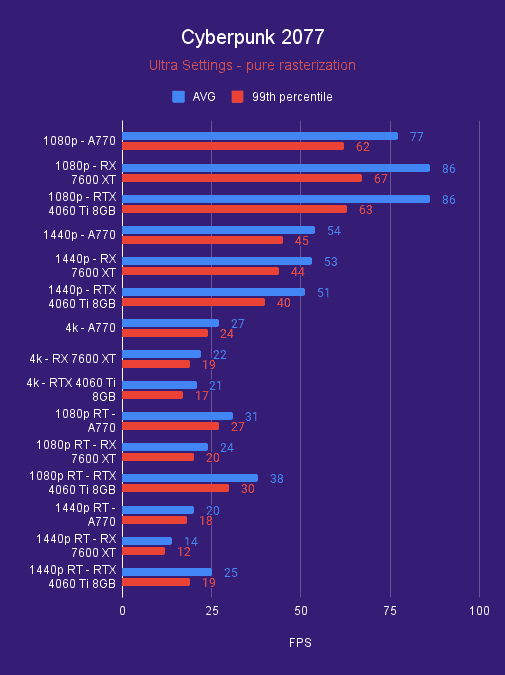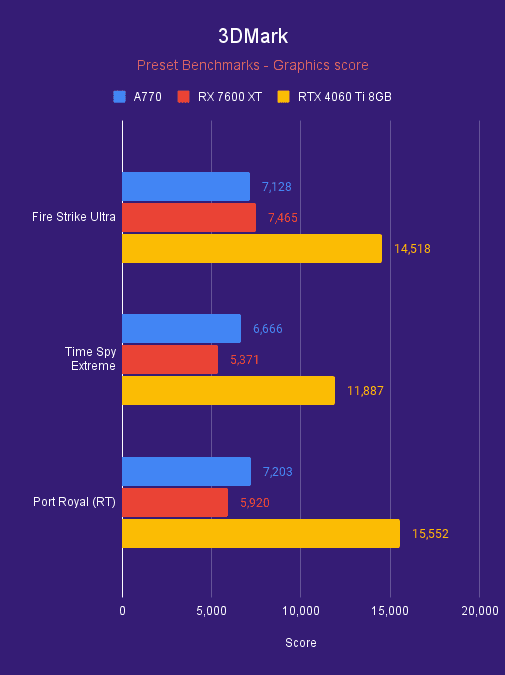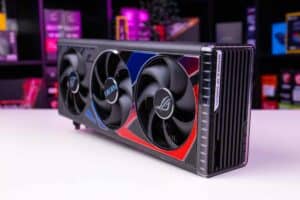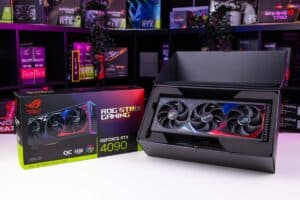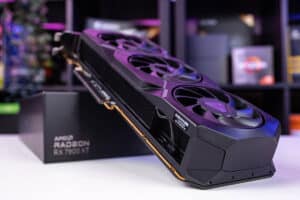Best Intel Arc GPU 2024: the top graphics cards Intel has to offer
Looking for a good GPU alternative? Intel Arc has some options to pick from
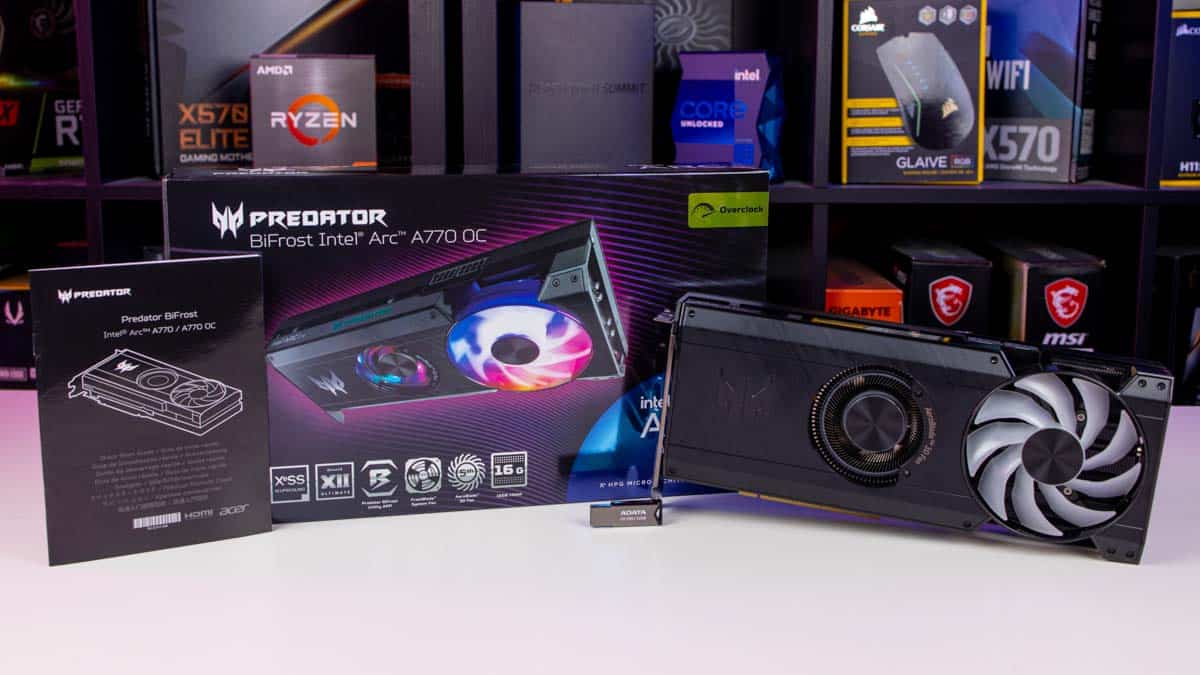
WePC is reader-supported. When you buy through links on our site, we may earn an affiliate commission. Prices subject to change. Learn more
Intel’s Arc GPU lineup (dubbed Alchemist) was released back in March 2022 and – despite being on the market for over two years now – are still in their 1st generation. While the majority of the Arc range sits firmly in the lower-end of the price spectrum, the brand’s flagship A770 offers up more competitive 1440p performance when compared to some of the industry’s middle-of-the-road models.
Like any modern graphics card, Alchemist GPUs support variable rate shading, AI-acceleration, and hardware ray tracing thanks to Intel’s proprietary Xe-HPG architecture. Furthermore, Arc graphics cards have been steadily improving since their initial release thanks to the brand’s continued support in the form of driver updates. But what exactly are the best Intel Arc GPUs right now?
Thankfully, as Intel only offer a small lineup of three core models right now (all geared towards a specific use case or budget) choosing the right one for your specific needs is pretty straightforward. That said, Intel are planning to expand the Arc range with the arrival of its Battlemage lineup, meaning our selections may change in the coming months.
Products at a glance
-
Best intel Arc GPU
Predator BiFrost Intel Arc A770 OC
- Core Clock Speed: 2.20 GHz
- Shading units: 4,096
- Memory Size: 16 GB GDDR6
- Dimensions: 267 x 117 mm, 2-slot
- PSU Required: 650 W
- TBP: 225 W
-
Runner Up
Intel Arc A750
- Core Clock Speed: 2,050 MHz base, 2,400 MHz boost
- Shading units: 3,584
- Memory Size: 8GB GDDR6
- Dimensions: 280 mm x 115 mm (L x H), 2 slot
- PSU Required: 550W
- TBP: 225W
-
Value Pick
Sparkle Intel Arc A580 ORC OC
- Core Clock Speed: 2,000MHz boost, 1,700MHz base
- Shading units: 3,072
- Memory Size: 8GB GDDR6
- Dimensions: 222 x 101 x 40.9 mm
- PSU Required: 600W
- TBP: 185W
How we tested the best Intel Arc graphics cards
Here at WePC, we benchmark every piece of hardware we can get our hands on – using the same tried and tested methodology found on our how we test GPUs page.
When we test picks from Intel, we run them through synthetic and real-world benchmarks to get an idea of overall performance. Unfortunately, we don’t have all of the Arc GPUs on hand, so we used independent reviews – on top of our own industry knowledge – to conclude which were best. Performance isn’t the sole focus of our testing methodology, we factor in aesthetics, build quality, value for money, and cooling when making our final decision.
Intel Arc GPUs have gotten better with time
Arc GPUs see incremental improvements with every driver update release. The range initially launched as a budget solution to the industry’s already-established dedicated graphics, but quickly turned into something that could rival low-end AMD GPUs.
One of the main reasons for Intel’s continued performance growth is through the brand’s driver update policy – something that we’ll touch upon in more detail below.
Best Intel Arc GPU

- Core Clock Speed: 2.20 GHz
- Shading units: 4,096
- Memory Size: 16 GB GDDR6
- Dimensions: 267 x 117 mm, 2-slot
- PSU Required: 650 W
- TBP: 225 W
- Memory Clock: 16 Gbps
- Memory Bus: 256 bit
- Card Bus: PCIe 4.0 x16
- Output: 1x HDMI 2.1, 3x DisplayPort 2.0
- Power Connectors: 2x 8-pin
The Intel ARC A770 is Intel’s crowning achievement and best entry into dedicated GPU Hardware. It’s low cost and high price-to-performance make this an attractive pick for the best GPU under $400. This GPU gets better with every driver update, resulting in performance that gives both the RX 7600 XT and the RTX 4060 Ti a run for their money.
- Overclocked model provides top performance in the range
- Still a cheap alternative to other 1080p and 1440p offerings
- Stylish design from Predator that will look good in any build
- A more expensive option than MSRP
- Drivers still have spotty issues depending on the game
- Model has a loud coil whine when under load
At the top of the pack is the Intel Arc A770, offering up decent performance for the money when compared to similar performing alternatives. The card is Intel’s flagship model in terms of performance, and through extended driver support, continues to improve with each update. As we got hands-on with the card and tested its capabilities in our quick look, the A770 certainly holds up against other 1080p and 1440p options.
In our testing, the A770 managed to bring in a very respectable 77 FPS average when playing Cyberpunk on ultra settings. It even did well in 1440p, managing a 54 FPS average. The interesting part about these benchmarks is that the A770 also manages to beat the RTX 4060 Ti and the 7600 XT in 4K. The A770 offered 27 average FPS while the 4060 Ti and the 7600 XT trail behind at 21 and 22 FPS respectively – something that we will touch upon in more detail shortly.
While the Limited Edition version of this card comes with an MSRP of $329, the same can’t be said for the tuned-up Predator – which retails for closer to $400. Intel has allowed AIBs to provide overclocked models that can push performance higher, resulting in an array of pricing.
Looking at specifications, the Intel Arc A770 ships with 4,096 shader cores in its 32 Xe cores. Along with 32 ray tracing units, 512 vector engines, and a memory configuration of 16GB GDDR6, across a 256-bit interface with 560 GB/s of bandwidth, and a speed of 17.5 Gbps. With the Predator card, the clocks are increased to 2.2 GHz and boosted up to 2.4 GHz, compared to 2.1 GHz of the standard A770.
- Core Clock Speed: 2,050 MHz base, 2,400 MHz boost
- Shading units: 3,584
- Memory Size: 8GB GDDR6
- Dimensions: 280 mm x 115 mm (L x H), 2 slot
- PSU Required: 550W
- TBP: 225W
- Memory Clock: 16 Gbps
- Memory Bus: 256-bit
- Card Bus: PCIe 4.0 x16
- Output: 1x HDMI 2.1, 3x DisplayPort 2.0
- Power Connectors: 1×8-pin + 1×6-pin
The Intel Arc A750 is a slight step down from the A770 in a few ways. This GPU will get you through pretty much any game at 1080p and offers a fantastic value for money, but struggles to compete with the 1440p performance displayed by our top selection.
- Great price-to-performance ratio
- Expected to be supported for some time as Intel drivers improve and add more supported games
- Drivers may not be optimized for the game you play specifically
- Accompanying software still in active development so can be finnicky sometimes
If you’re looking for a slightly cheaper version of the A770, then the Intel Arc A750 is a fine alternative. It does come pretty close to the A770 in terms of performance, but with an MSRP of $289, it lowers the barrier to entry – which is important for those who are fairly budget-orientated.
The A750 drops down to 3,584 shading units from the 4096 of the Predator, with 28 Xe cores, and 28 ray tracing units. Additionally, the more budget-focused card comes equipped with a memory setup of 8 GB of GDDR6, a 256-bit bus clocked at 16 Gbps, and a bandwidth of 512 GB/s. All of this equates to solid 1080p performance and a GPU that is capable of providing a immersive experience – as long as the games are supported by Intel’s developing drivers. The Ray Tracing implementation is also a nice feature to have, as Techpowerup mentions in its review.
The design of this card is a little simpler, opting for a sleeker, low-profile design compared to some of the visually louder GPUs on the market – adding versatility to its growing list of reasons to buy.
- Core Clock Speed: 2,000MHz boost, 1,700MHz base
- Shading units: 3,072
- Memory Size: 8GB GDDR6
- Dimensions: 222 x 101 x 40.9 mm
- PSU Required: 600W
- TBP: 185W
The Arc A580 is one of the best value GPUs on the market right now, delivering a respectable 40 – 60 frames per second in 1080p. Sadly, that’s all you can expect from this card, so don’t choose it if you’re looking to play more demanding games at higher resolutions.
- Very cheap for modern day graphics card
- Great value for basic 1080p gaming performance
- Decent ray tracing performance, even when compared with AMD and Nvidia
- Requires ReBAR for best performance so needs a more recent platform
- Oddly large power requirement for a budget card
Finishing off the lineup is Intel’s A580, the brand’s entry-level 1080p model. The Intel Arc A580 offers up a lot for its current $180 price tag, and with big GPU manufacturers basically abandoning this price point, it dominates that part of the market.
As Gamers Nexus revisits the constant updates Intel delivers to its drivers, the card is a good choice for basic 1080p gaming, offering around 60FPS in older games such as CS and LOL. That said, fiddling around with a few settings might get you into the triple digits in less-demanding titles. Don’t expect it to jump to the heights reached by other ‘more powerful’ GPUs in this guide though, it’s place lies firmly in the lower-end of the performance spectrum. That said, it does a decent job trying to match what the RX 6600 and 3060 can achieve, even when ray tracing is turned on.
Despite the performance of this card, the TBP comes in at 185 Watts. This is an oddly large power requirement for a very budget GPU, and it is much higher than the likes of the RTX 4060 – which only asks for around 115W.
How Intel Arc GPUs compare to Nvidia and AMD
For those who aren’t familiar with Intel’s dedicated GPU range and how it stacks up against the competition, we’ve highlighted Cyberpunk 2077 performance below. As we alluded to earlier, we tested the Arc A770 in Cyberpunk 2077 in both 1440p and 1080p, comparing them against a range of different models to highlight relevant performance.
The Arc A770 sat at the bottom of the pack in 1080p when we tested it, but the 1440p charts fare a little better. The A770 manages to beat the 4060 Ti and the 7600 XT. The RTX 3070 inches just ahead of the A770 in 1440p, but the gap could easily be closed by tweaking some settings or enabling XeSS. The main reason for this, outside of excellent driver support, is the addition of 16 GB of VRAM – which allows the card to churn through more demanding resolutions.
Arc driver improvements explained
We mention the drivers a lot in this article because it’s not often you get to see fresh GPU drivers start from scratch and try to make sense of the world. It’s because of this that we’ve been able to closely follow the driver updates and see just how much improvement these drivers have made to Arc GPU performance. AMD and Nvidia already have a lot of what they need locked in, so the changes made never really result in anything so drastically large.
Tom’s Hardware once reported that a particular Intel driver update increased frame rates by up to 174%, describing the drivers as “hitting hard”. We just don’t see those kinds of improvements with drivers from either of the other GPU manufacturers.
Intel Arc, armed with XeSS upscaling
Upscaling is a fairly modern technology that allows your GPU to render images at a lower resolution, and upscale them to the resolution you want to play at. You may have heard of DLSS on Nvidia GPUs, but Intel uses a different technology known as XeSS. If you’ve been looking at the numbers and you aren’t convinced, we’re happy to report the implementation of XeSS works very well here.
TechRadar tested the A750 with XeSS enabled in Diablo 4, and the results showed a huge jump in performance, even with the details all turned up to the high preset. Without XeSS, the game ran at 37 FPS, turning XeSS 1.3 on netted 91 FPS in the same test. This was in 1440p too, might we add. This was the best result achieved, as TechRadar went on to say that other games saw a more modest improvement of around 10%.
Can Intel Arc GPUs play games at 4K?
Although the use case for these GPUs is not aimed at 4K gaming, there are certain situations that the A770 can handle. In our testing, the A770 managed to bring in a 27 FPS average in CP 2077, actually beating the 7600 XT and the 4060 Ti. Gamer’s Nexus also reported pretty decent numbers in some of the games he tested in 4K. Resident Evil 4 saw a 41 FPS average, and R6 Siege saw an 88.2 FPS average, these results are on the same page we cited earlier.
As it appears, it is entirely game-dependent on whether or not the Arc GPUs can handle 4K, but you already knew that, you just wanted the numbers. We chose to give the A770 a run because it’s the most powerful GPU that Intel has to offer so far. We doubt you’d get a playable 4K experience out of the lesser models.
Final Word
Based on our results, the best Arc GPU is the A770 as it offers great value for money and knows how to hold its own when gaming at 1440p. As per our testing, it edges out over the 4060 Ti and the 7600 XT by a couple of FPS, but this lead could definitely be extended with the use of XeSS. If you’re looking for a card that can do 4K though, we’d suggest looking elsewhere – as the A770 just doesn’t have the power to pull off 4K gaming (even though it beat the 7600 XT and the 4060 Ti there too).

